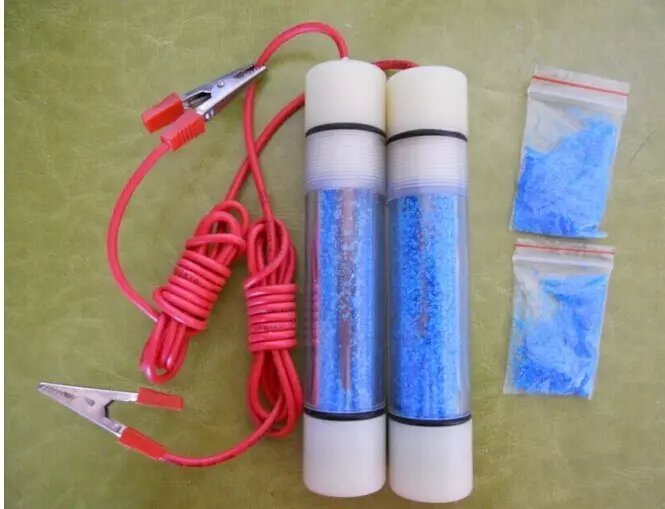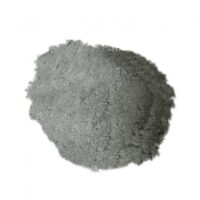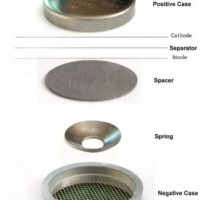Specifications: wood core wetted, porous ceramic core wetted
1. Application: The portable copper sulfate reference electrode is suitable for on-site use. It is mainly used to measure the natural potential and cathodic protection potential of underground metal pipelines, and to measure the stray current in the soil. It can also be used to measure the potential of cable metal sheaths and steel bars in concrete. The electrode can be used as a reference electrode for controlling potential in impressed current cathodic protection system where the soil is relatively sticky. Can be used in various soils and fresh water.
2. Structural properties
(1) The electrode is small in size and easy to carry. The cavity is made of a transparent nylon rod, which is convenient for observing the saturation of the copper sulfate solution inside.
(2) The electrode potential is stable and the electrode is not easily polarized.
(3) The electrode has a long service life, and the electrode cap is connected to the electrode cavity with a screw, so it is convenient to fill the solution.
(4) The electrode structure is firm, the joints are corrosion-resistant, the microporous membrane leaks at a reasonable rate, and there is no visible liquid flow, so it can be placed in a pocket.
3. Use and maintenance of copper sulfate reference electrode
First of all, keep the surface of the reference electrode clean. When not in use, cover the porous plug with a plastic bag or rubber cap to avoid contamination. Then periodically replace the copper sulphate inside and clean the rod with a non-metallic abrasive material; for example, use silica sandpaper instead of aluminum oxide sandpaper to clean the copper rod, if the solution becomes cloudy, pour it out and replace with new copper sulphate solution. Make sure that there are always undissolved crystals in the solution; this saturated copper sulfate solution prevents corrosion of the copper and thus stabilizes the electrode. In a polluted environment, after using the electrode, it should be maintained. Contamination with chlorine compounds can alter chemical reactions. When the concentration is 5ppt, the reference potential becomes a mixed potential with a deviation of -20mV, and when the concentration is 100ppt, the deviation reaches -95mV. When the cathodic protection project is under construction, a reference electrode should be prepared for backup. If the electrode is lost, another reference electrode can be used to continue working.
When the reference electrode is used on site, another new electrode needs to be prepared in order to calibrate whether the electrode used on site is accurate. But when there is more than 5mV between the value measured by the calibration electrode and the value measured by the reference electrode being used on site, it is necessary to clean the electrode used on the construction site.
Because the temperature and sunlight exposure in the construction environment are different, it is necessary to correct the change of the potential. To perform potential correction for temperature differences, it is very necessary to record the temperature at the same time when reading the value of the reference electrode. When the reference temperature value used is higher or lower than the actual temperature value, the temperature correction value of 0.5mV/°F or 0.9mV/°C must be added or subtracted when recording.
During the measurement process using the reference electrode, it is necessary to shield the electrode and avoid direct sunlight. You can use black tape to cover the transparent part on one side of the electrode. The value measured by the reference electrode will be different when the sunlight exposure is different. The potential of the reference electrode in a sunny environment is higher than that of the reference electrode in a dark place without sunlight. 10 to 50mV.
In a special environment, the reference electrode should also choose different types according to different environments, such as the special reference electrode for the inner wall of the storage tank, which is used for the measurement of the cathodic protection potential in the inner wall of the storage tank or other water media. The structure of this special reference electrode is to fix the pure zinc rod in a porous non-metal shell to ensure that the electrode does not have direct contact with the protected equipment. The potential of the special reference electrode for the inner wall of the storage tank is in the sleeve to avoid direct contact with the wall. The electrode potential is -1.10V CSE, the potential is stable, the drift or polarization is less than 5%, and the structural protection potential should be lower than +0.25 V. The main components of the special reference electrode for the inner wall of the storage tank are: A1 less than 0.005%, Cd less than 0.003%, Fe less than 0.0014%, Cu less than 0.002%, Pb less than 0.003%, and Zn as the balance. 1. Portable reference electrode application: Portable copper sulfate reference electrode is suitable for on-site use. It is mainly used to measure the natural potential and cathodic protection potential of underground metal pipelines, and to measure the stray current in the soil. It can also be used to measure the potential of cable metal sheaths and steel bars in concrete. The electrode can be used as a reference electrode for controlling potential in impressed current cathodic protection system where the soil is relatively sticky. Can be used in various soils and fresh water.
1. Features
The portable copper sulfate reference electrode is suitable for field use. It is mainly used to measure the natural potential and cathodic protection potential of underground metal pipelines, and to measure the stray current in the soil. It can also be used as a reference electrode for controlling potential in the impressed current cathodic protection system. It can be used to measure the metal sheath of cables and the steel bars in concrete. potential.
The electrode can be used in places with sticky soil and various types of soil and fresh water.
2. Structural performance
1. The electrode is small in size and easy to carry. The cavity is made of transparent plexiglass, which is convenient for observing the saturation of the copper sulfate solution inside.
2. The electrode potential is stable. Under standard conditions, the potential of the calomel electrode is 70±3mV, which is in line with the theoretical value, and the potential difference between them is less than ±1mV.
3. The electrodes are not easily polarized, and the potential difference between them is less than ±3mV when used on site. Electrode internal resistance is less than 3KΩ.
4. The electrode has a long service life, and the electrode cap is connected with the electrode cavity with a screw, so it is convenient to fill the solution. One filling can be used for more than one year, as long as the cavity is not damaged, it can be filled many times and used for a long time.
5. The electrode structure is firm, the joint is corrosion-resistant, the microporous membrane leaks at a reasonable speed, and there is no visible liquid flow, so it can be placed in a pocket.
3. How to use
1. Open the front cover of the reference electrode, inject distilled water to 2cm above the copper sulfate particles, cover the front cover, and shake it several times to fully dissolve the copper sulfate particles;
2. Soak the breathable plug of the reference electrode in clean water;
3. Insert the end of the reference electrode into the moist soil near the metal structure to be tested, adjust the multimeter to the 2V range, and connect the wire of the reference electrode to the black wire end of the multimeter;
4. Clamp the red line of the multimeter to the test line in the test pile, read and record the data.




